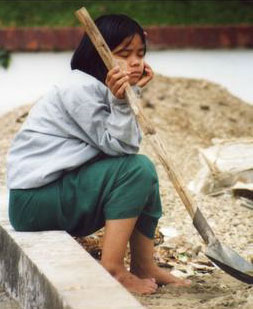 We are sorry to say that Mac is not very well, but he is still
e-mailing strong and recently sent the Beetle a collection of
travel reminiscences about Australia, camels which takes us to
India and then back to Australia.
We are sorry to say that Mac is not very well, but he is still
e-mailing strong and recently sent the Beetle a collection of
travel reminiscences about Australia, camels which takes us to
India and then back to Australia.
In Alice Springs Australia I stayed in an Anglican (Church) Hostel. I was pleased but surprised that they sold beer in this church hostel. Nothing wrong with this especially since it was Australia but something different. When we arrived in Alice Springs the bus driver got a broom and swept off the dust from our suitcases. I guess the Coober Pedy, where the author of article below stared his safari from was that town, that was mostly underground as it was so hot. Even the chapel or church was underground where I went to Midnight Mass on Christmas Eve. They dug and searched for emeralds underground. You paid a few dollars and you could dig for same.
I think maybe they planted inferior or cheap emeralds so tourist could discover them but maybe it was genuine. On our bus going to the outback there were two drivers, double springs, double air conditioning and one tub full of ice in aisle way where people put beer (it was the Holidays). We stopped at one out of the way shack and it was full of grizzled natives.
We had a British lady with us that was dressed as if she was going to a party at Buckingham Palace and she carried a dainty parasol. The grizzled natives decided they would have some fun with this British lady. They said. You know when Prince Philip was in Australia he went with a native girl. The lady replied “Good for him!” It turned out she was a journalist and had been around and could pass out the repartee too. I used the term Safari which in Africa means any kind of journey I am told, but don't know if they call them that in Australia.
I am reminded of camels. One of the reasons I did not enjoy a camel safari in Rajasthan was because we did not have an entertaining fun group of people and we did not see much except sand dunes. I am a sightseer and want to see things. Ha! It was kind of boring but another time I might have enjoyed it. I really did enjoy the cities with their castles and their colourful people in colourful garb in Rajasthan and it was kind of medieval or something. It was just that I was kind of out of sorts on that day of camel riding. Sometimes on a lengthy trip you need to stop travelling and just sleep or rest for a day or two (kind of a vacation within a vacation) and then continue on. I was trying to see all of India in one trip. I later returned two more times and by then I was more adjusted to India and really enjoyed it. I only recommend India though to people that can kind of rough it and don't get too upset by poverty. Poverty in warm countries where they have large family support does not bother me as much as poverty in cold countries. I saw a lady in Nepal sitting on the ground trying to sell six peanuts. Come to think of it, tourists were giving her money so maybe she knew what she was doing.
Back to Australia: there is an article in the January 2001 Smithsonian Magazine titled For Dromedary Trekkers in Australia's outback its Camelot in the Desert by Derek Grzelewski, photographs by Mark S Wesler. The Author had seen a sign earlier on a camel farm “For those of you who have never ridden a camel we have camels that have never been ridden before”. Here is a condensation of the rather lengthy but interesting article.
It was a 150 mile desert trek on two dozen dromedaries from Archaring Hills north of Coober Pedy toward Witjaira National Park. The camels go in single file with three weeks of provisions (swags (sleeping rolls) and 100 gallons of water). The human participants would ride only an average of two hours a day taking turns sharing the two camels that were not carrying supplies and equipment. The rest of the time they walked beside the camels. (Me/Mac speaking now: I one time took about a two hour safari on camel out of Rajasthan India. Maybe it was a half day. I had forgotten about it until I read this article. The camels and their keepers in Australia originally came from Rajasthan, India or Northern India and Pakistan. The five seasoned cameleers and eight adventurers in Australia might have been on camels that were ancestors of the camel I tried to ride.
The author describes the trip as a gentle rocking motion that one could read a book while riding. (Me, I remember my ride as mildly uncomfortable. My camel was smelly and had bad breath worse than mine. In Egypt outside Pyramids the touts will tell you if you are an American that your camels name is Coca Cola. If you are Canadian they will tell you that your camels name is Canadian Club, if German your name is Heineken. Same camel. I disliked the camel I rode in Rajasthan so much that I did not ask its name.
All I could think of was I want to get back to civilization and get a cold beer. We had no beer with us. Perhaps it was forbidden. Drunken tourists and drunken camels would have been more fun. Camels can do without water for weeks but I couldn't go a couple of hours without beer. Camels can travel 600 miles without drinking if food is succulent (plants) and the air cool. These camels and handlers (known as Afghans or simply Ghans) brought from India many years ago were used to haul supplies to remote mines and sheep stations. Also sleepers for the Transcontinental Railway and the first piano arrived in Alice Springs lashed to the hump of a camel. Between 10,000 and 20,000 were released to the desert to fend for themselves when the Ghans became unemployed and could not feed their camels. The camels thrived in the desert and doubled their population every six to ten years.
There are now as many as 40,000 out in the desert. “The once unsurpassed beast of burden became simply a beast and a burden.” Now the Australians find camel meat lean and tasty and the fur and hides are used for crafts and clothing. The author did not say how much trip cost. Mine out of Rajasthan was reasonable and I got it from one of their Government sponsored hotels in Rajasthan. Now for a quiz for my generation: was the Arab on the package of Camel cigarettes riding the camel, standing beside the camel or leading the camel? Answer: he was not sitting on the camel, standing beside the camel or leading the camel. He was behind the pyramid in the picture taking a sh_t.
Happy Camel Riding. Mac

 The fact is that the
call for a tourism boycott comes from Burma's elected
leaders. The National League for Democracy (NLD), who won a
landslide victory in Burma's 1990 election, remains the
only party mandated to represent the Burmese people and it is
a party that continues to draw the support and respect of
people inside and outside the country. Burma's Government
in exile, the National Coalition Government of the Union of
Burma (NCGUB), supports the boycott and it is a position that
has the backing of exile Burmese democracy groups around the
world.
The fact is that the
call for a tourism boycott comes from Burma's elected
leaders. The National League for Democracy (NLD), who won a
landslide victory in Burma's 1990 election, remains the
only party mandated to represent the Burmese people and it is
a party that continues to draw the support and respect of
people inside and outside the country. Burma's Government
in exile, the National Coalition Government of the Union of
Burma (NCGUB), supports the boycott and it is a position that
has the backing of exile Burmese democracy groups around the
world.
 The article also fails to mention
that in Burma many human rights abuses are directly connected
to the regime's drive to develop the country for
tourists. Throughout Burma men, women and children have been
forced to labour on roads, railways and tourism projects;
more than one million people have been forced out of their
homes in order to 'beautify' cities, suppress
dissent, and make way for tourism developments, such as
hotels, airports and golf courses. And these abuses are not
confined to history. In February 2004, for example, Burmese
soldiers rounded up ethnic Salons, or 'sea gypsies'
who normally live on boats in the Mergui Archipelago, forced
them to live on land and to take part in a 'Salon
Festival' aimed at foreign tourists.
The article also fails to mention
that in Burma many human rights abuses are directly connected
to the regime's drive to develop the country for
tourists. Throughout Burma men, women and children have been
forced to labour on roads, railways and tourism projects;
more than one million people have been forced out of their
homes in order to 'beautify' cities, suppress
dissent, and make way for tourism developments, such as
hotels, airports and golf courses. And these abuses are not
confined to history. In February 2004, for example, Burmese
soldiers rounded up ethnic Salons, or 'sea gypsies'
who normally live on boats in the Mergui Archipelago, forced
them to live on land and to take part in a 'Salon
Festival' aimed at foreign tourists.
